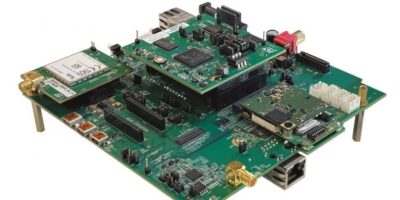Videantis, which provides automotive deep learning, computer vision and video coding solutions, has announced that it will partner with the Fraunhofer Institute for Integrated Circuits IIS, Infineon and other leading companies and universities to develop an artificial intelligence (AI) ASIC and software development tools specifically for intelligent autonomous vehicles.
The Videantis AI multi-core processor platform and tool flow has been selected for the KI-Flex autonomous driving chip project.
Autonomous driving relies on fast and reliable processing and merging of data from several lidar, camera and radar sensors in the vehicle. This data can provide an accurate picture of the traffic conditions and environment to allow the vehicle to make intelligent decisions when driving. The process of intelligently analysing these volumes of sensor data requires high-performance, efficient, and versatile compute solutions.
Videantis, Fraunhofer IIS and partners working on the KI-Flex project to develop a powerful system-on-a-chip and associated software development tools will use the AI multi-core processor to run the algorithms used for sensor signal processing and sensor data fusion to enable the vehicle’s exact position and environment to be understood. The chip will integrate the next-generation videantis processors and technology to run these demanding artificial intelligence algorithms in real-time and with low power consumption. This chip will also be supported by an automated tool flow from Videantis, which automatically distributes and maps AI workloads onto the parallel architecture.
Under the KI-Flex program, Videantis will integrate its multi-core processor into a software-programmable and reconfigurable chip that processes the sensor data using AI-based methods for autonomous driving.
The project, which runs until August 2022, is funded by the German Federal Ministry of Education and Research (BMBF). Fraunhofer IIS leads the project consortium, which comprises Ibeo Automotive Systems, Infineon Technologies, Videantis, Technical University of Munich (Chair of Robotics, Artificial Intelligence and Real-time Systems), Fraunhofer Institute for Open Communication Systems FOKUS, Daimler Center for Automotive IT Innovations (DCAITI, Technical University of Berlin) and FAU Erlangen-Nürnberg (Chair of Computer Science 3: Computer Architecture).
Videantis is headquartered in Hannover, Germany. It provides deep learning, computer vision and video processor IP for flexible computer vision, imaging and multi-standard hardware/software video coding for automotive, mobile, consumer, and embedded markets. Based on a unified processor platform approach that is licensed to chip manufacturers, Videantis provides tailored solutions to meet the specific needs of its customers. Core competencies are deep camera and video application with SoC design and system architecture expertise. Target applications are advanced driver assistance systems (ADAS) and autonomous driving, mobile phones, augmented reality / virtual reality (AR/VR), IoT, gesture interfacing, computational photography, in-car infotainment, and over-the-top (OTT) TV.







